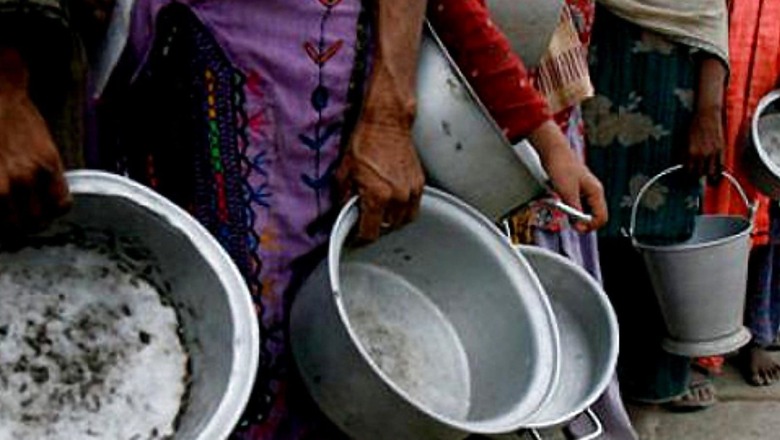
views
Encapsulating the development story of a country through the means of composite index is consistently in vogue. Multidimensional Poverty Index, Global Hunger Index (GHI), World Press Freedom Index, and the Democracy index are a few examples to quote. While coining such indicators and index comes handy to policymakers for decision-making, it does eliminate the scope of understanding a region’s context and depth of an existing phenomenon. The uproar around Global Hunger Index (GHI) is one such example. In its basic concept, GHI was developed to ensure the world achieves ‘Zero Hunger’ by 2030 as part of Sustainable Development Goals. The index is based on four indicators to evaluate the hunger level of a country — percentage of undernourishment in population, children under 5 years suffering from wasting, under five children suffering from wasting, and child mortality for children under five years of age.
As for its latest report, GHI said India has slipped low in ranking compared to previous estimates and thus putting the country under ‘serious’ category of hunger. The Government of India (GoI) contested it as wrong and claimed the methodology to be flawed and ‘unscientific’. The objection comes in the light of assessing results of GHI simply based on four question-based opinion poll that was conducted telephonically by Gallup. If we take a closer look, the claims resonate with inherent challenges of compartmentalising intricate subject of ‘hunger’ through certain estimations and terminologies involved.
The estimates by the Food and Agriculture Organization’s (FAO) show variation in the norms, methodology, and data used for calculating minimum energy requirements by the population whose daily food consumption doesn’t meet the energy requirements to live a healthy and active life. Since the undernourishment is calculated by considering factors such as income levels, food consumption patterns, population structure with the absence of food consumption data in most of the countries, there is a question on the veracity of data presented. Adding on, the debates continue to be inconclusive around the cut-off to be considered for calculating minimum energy requirement in countries while assessing the level of hunger. For instance, the FAO’s average global energy requirements have a norm of 1800 kcal, compared to 2400 kcal for rural areas and 2100 kcal for urban areas in India based on Indian Council of Medical Research-National Institute of Nutrition (ICMR-NIN) calculations. The category is thus highly associated with a country’s population structure and occupation which invariably influences the energy requirements.
Since undernourishment (hunger) is directly related to food production, it is misleading to calculate malnutrition-based indicators (such as stunting and wasting) under the ‘hunger’ index alone. More so, if calculating hunger, then negating India’s progress in doubling its food production in last 50 years is also misleading. It would be good for a global analysis like GHI to present a set of recommendations that will be helpful to countries not performing well. For instance, for calculating energy requirements there should be a dietary data to compare with. Countries like India, can consider working around dietary data to support the claims on undernourishment levels and find solutions in accordance.
Looking at the estimations of GHI, three from four indicators refer under five years of children as a point of assessment. However, under 5 children constitutes only 11.5% of the total population in India. Also, undernourished population is calculated as inclusive of undernutrition in children. With this calculation, GHI is clearly assigning 70.5% weightage to children who are below five that constitutes less share and then assigning 29.5% weightage to population who is above five, which holds 81.5% of the total population. This presents a strong case for whether GHI is representative of the hunger level in the entire population or a particular target group.
To sum up, it is indeed a reductionist approach to assess the issue of malnutrition under the label of ‘hunger’, which embeds a multidimensional perspective in its point of assessment. Indicators offer the current world a convenient form of knowledge in a way it shapes, and influences policymakers to interpret the world. However, as it expands its economic origins in national and global governance, it is significant that evaluating welfare paradigms doesn’t fall prey to such domination of measurement where rankings have become a way of pitting one country against each other while omitting the methodological challenges involved. Such environment of promoting social justice will be devoid of accurate empirical evidence and subjectivity of a complex phenomenon.
Bhavani Giddu and Riya Gupta are public health communicators working on advocacy communication in the women and child nutrition. The views expressed in this article are those of the authors and do not represent the stand of this publication.
Read all the Latest Opinions here




















Comments
0 comment